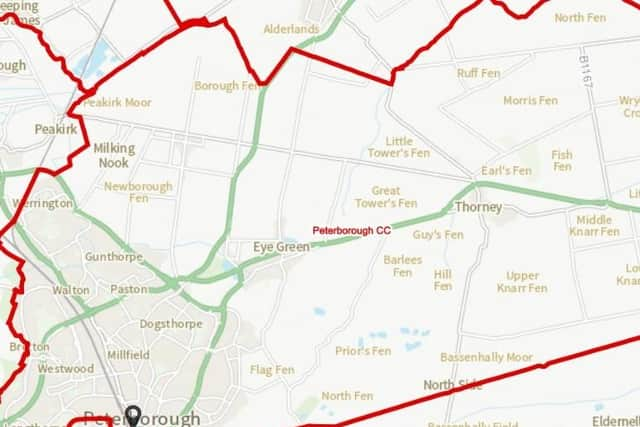Proposed Peterborough constituency boundary change reversed
and live on Freeview channel 276
The Boundary Commission for England (BCE) previously outlined plans to redraw the boundary so that it included the ward of Fletton & Woodston which is currently part of the North West Cambridgeshire constituency.
But following a new review it is now proposing that the Peterborough constituency remains largely unchanged from its current state.
Advertisement
Hide AdAdvertisement
Hide AdUnder the proposed changes, part of Fletton and Woodston ward, which is currently in the Peterborough constituency, would join the remainder of the ward in North West Cambridgeshire.


In addition, two areas of the Glinton and Castor ward which currently sit in the Peterborough constituency, would join the remainder of the ward in North West Cambridgeshire. The changes would bring the Parliamentary boundaries in line with the ward boundaries that were changed in 2016.
The latest review follows a U-turn on attempts to cut the number of MPs from 650 to 600.
It also seeks to make sure all constituencies have between 69,724 and 77,062 voters in them.
Advertisement
Hide AdAdvertisement
Hide AdThe final recommendations will be made to Parliament by July 2023 with a public consultation now underway.
Under the latest proposals, Cambridgeshire would expand from seven to eight constituencies.
But the BCE noted: “The existing Peterborough constituency is the only constituency in Cambridgeshire currently within the electorate range, and in our proposals it remains unchanged other than to realign with new local government ward boundaries.
“We identified that it is possible to create a Peterborough constituency that is more compact around the city centre, crossing the River Nene. However, we consider that the constituency remaining unchanged more closely reflects the statutory criteria, especially given the knock-on impacts such a reconfiguration would have on the North West Cambridgeshire and Huntingdon constituencies.”
Advertisement
Hide AdAdvertisement
Hide AdThe BCE added that the North West Cambridgeshire and Huntingdon constituencies have electorates which are “significantly above the permitted range,” meaning that “substantial change is inevitable”.
It is proposing that: “In addition to realigning with new local government boundaries, in our proposals the Huntingdonshire district wards of Holywell-cum-Needingworth, Somersham, Warboys and Sawtry are transferred from the existing North West Cambridgeshire constituency to the proposed Huntingdon constituency.
“No further changes are required to the northern part of the North West Cambridgeshire constituency, other than to realign the constituency boundaries with local government ward boundary changes.”
Regarding North East Cambridgeshire, it said there should be “minimal change,” with the constituency becoming “wholly coterminous with the district of Fenland”.
Advertisement
Hide AdAdvertisement
Hide AdIt added; “The three East Cambridgeshire district wards of Sutton, Downham Villages and Littleport, currently included in the existing North East Cambridgeshire constituency, are instead included in our proposed East Cambridgeshire constituency.”
Both Peterborough (Paul Bristow) and North West Cambridgeshire (Shailesh Vara) are currently represented by Conservative MPs, although Peterborough has also had three Labour MPs this century.
The latest proposals by the BCE, if approved, would see the number of MPs in Scotland and Wales cut, with England gaining 10 seats overall.
The changes set to begin from 2023 would be the first major overhaul of seat boundaries in England since 2010, with just under 10 per cent of existing constituencies remaining unchanged.
Advertisement
Hide AdAdvertisement
Hide AdMembers of the public are encouraged to visit www.bcereviews.org.uk to view maps showing the proposed new boundaries and provide feedback before the consultation closes on August 2.
There will be a further two rounds of consultation in 2022.
Following the conclusion of all three consultation periods the BCE will look at all the evidence received before forming its final recommendations.